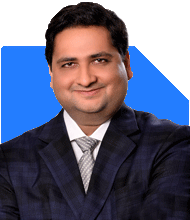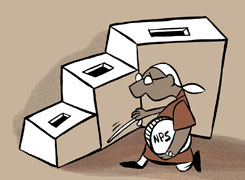Hardik Parikh | Answer |Ask -Follow
Tax, Mutual Fund Expert - Answered on May 04, 2023
He also holds an MBA degree from IIM-Indore.
Hardik, who began his career as an equity research analyst, founded his own advisory firm, Hardik Parikh Associates LLP, which provides a variety of financial services to clients.
He is committed to sharing his knowledge and helping others learn more about finance. He also speaks about valuation at different forums, such as study groups of the Western India Regional Council of Chartered Accountants.... more

Is it advisable to with draw PF at age of 52 and will once get pension if he with draws PF
Thank you for reaching out with your query. As a financial advisor, I understand that making decisions about your Provident Fund (PF) can be quite critical, especially when it involves your retirement and pension plans.
Withdrawing your PF at the age of 52 is an option, but it's important to consider the financial implications of doing so. By withdrawing your PF early, you may be missing out on the potential growth of your investment through compound interest, which can significantly impact your retirement savings.
As for the pension, the Employee Pension Scheme (EPS) is a separate component of the overall PF contribution. If you withdraw your PF, it does not necessarily mean that you lose your right to the pension. However, to be eligible for pension benefits, you must have completed a minimum of 10 years of service, and you can only start receiving the pension after attaining the age of 58.
Before making any decision, I would recommend you to evaluate your current financial situation, your retirement goals, and any immediate financial needs. If you have other sources of income or investments, it might be better to leave your PF untouched to continue growing until your retirement. However, if you have urgent financial needs, you can consider withdrawing your PF partially or in full, but make sure to weigh the pros and cons carefully.
If you're unsure about the best course of action, it would be wise to consult with a professional financial advisor who can provide personalized guidance based on your specific circumstances.
I hope this helps.
Best regards,
You may like to see similar questions and answers below
Milind Vadjikar | Answer |Ask -Follow
Insurance, Stocks, MF, PF Expert - Answered on Jan 24, 2025
Nitin Narkhede |113 Answers |Ask -Follow
MF, PF Expert - Answered on Dec 15, 2025
Nitin Narkhede |113 Answers |Ask -Follow
MF, PF Expert - Answered on Dec 15, 2025
Ramalingam Kalirajan |10893 Answers |Ask -Follow
Mutual Funds, Financial Planning Expert - Answered on Dec 15, 2025
Ramalingam Kalirajan |10893 Answers |Ask -Follow
Mutual Funds, Financial Planning Expert - Answered on Dec 15, 2025
Radheshyam Zanwar |6746 Answers |Ask -Follow
MHT-CET, IIT-JEE, NEET-UG Expert - Answered on Dec 15, 2025
Ramalingam Kalirajan |10893 Answers |Ask -Follow
Mutual Funds, Financial Planning Expert - Answered on Dec 15, 2025
Ramalingam Kalirajan |10893 Answers |Ask -Follow
Mutual Funds, Financial Planning Expert - Answered on Dec 15, 2025
Ramalingam Kalirajan |10893 Answers |Ask -Follow
Mutual Funds, Financial Planning Expert - Answered on Dec 15, 2025
Samraat Jadhav |2508 Answers |Ask -Follow
Stock Market Expert - Answered on Dec 15, 2025
Ramalingam Kalirajan |10893 Answers |Ask -Follow
Mutual Funds, Financial Planning Expert - Answered on Dec 15, 2025
























